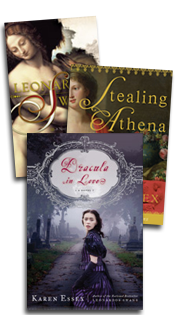Leonardo’s Swans reveals the drama behind many of the artist’s most famous paintings, answering questions that have remained mysteries for centuries:
—Who are the mysterious beauties in Lady With an Ermine and La Belle Ferroniere and why were they chosen to be immortalized by the great Leonardo? In which of his paintings do they appear as religious figures?
—How did Leonardo come to paint The Last Supper? Whose ambitions did it truly serve, artist or patron? What were the artist’s intentions for the mural? How did Leonardo break with the many hundred–year tradition of how painters represented this event? Why did he leave it incomplete until he found the perfect model for Judas?
—Leonardo’s legal entanglements over The Virgin of the Rocks; how he clashed with the monks who commissioned the painting, but changed the nature of religious painting in the process. How his models for the Blessed Virgin and for the angel Gabriel were actually the duke’s most exalted mistresses.
—What was the genesis of the Mona Lisa, and why did it become Leonardo’s obsession?
—The excerpts from Leonardo’s notebooks that introduce each chapter are, in fact, excerpts from his notebooks and letters, so that the portrait of the artist is not conjecture or fantasy, but drawn from Leonardo’s own thoughts and experiences.
—The works of art in the book are the actual works of Leonardo. The female characters dramatized in the book—Isabella and Beatrice d’Este, Cecilia Gallerani, Lucrezia Crivelli—are the flesh and blood subjects of these paintings. Their rivalries for the affection and favor of the notorious Duke of Milan—as well the obsession of Isabella to be painted by Leonardo—are documented in historical sources and are rendered herewith based on those sources.



